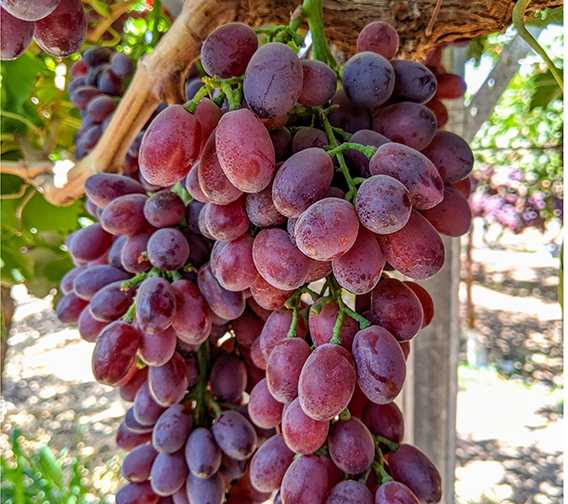Squash Growers Weigh in on Current State of the Crop
The majority of U.S. vegetable operations (71%) grow some type of squash on their farms. If you break that down, 60% of U.S. farms grow summer squash or zucchini, 53% grow winter squash, and 50% grow pumpkins.
We analyzed how squash growers differed from all growers when answering the American Vegetable Grower 2023 State of the Vegetable Industry survey. One thing to keep in mind as you look over the data here is that squash growers are included in the “all growers” group. That means where we found significant deviations, the differences between the two groups is likely even more significant.
The first comparison we found was in farm size. Most U.S. farms are small. In fact, 80% are less than 500 acres. Squash growers are even more likely to own small farms, with 87% claiming less than 500 acres.
With the smaller operation sizes, it’s no surprise squash growers are mostly direct-to-consumer growers than growers as a whole (86% compared to 74%).
Production Levels
Each year, we ask growers not only about which crops they grow, but also about any shifts in how much of the crop will take place that season.
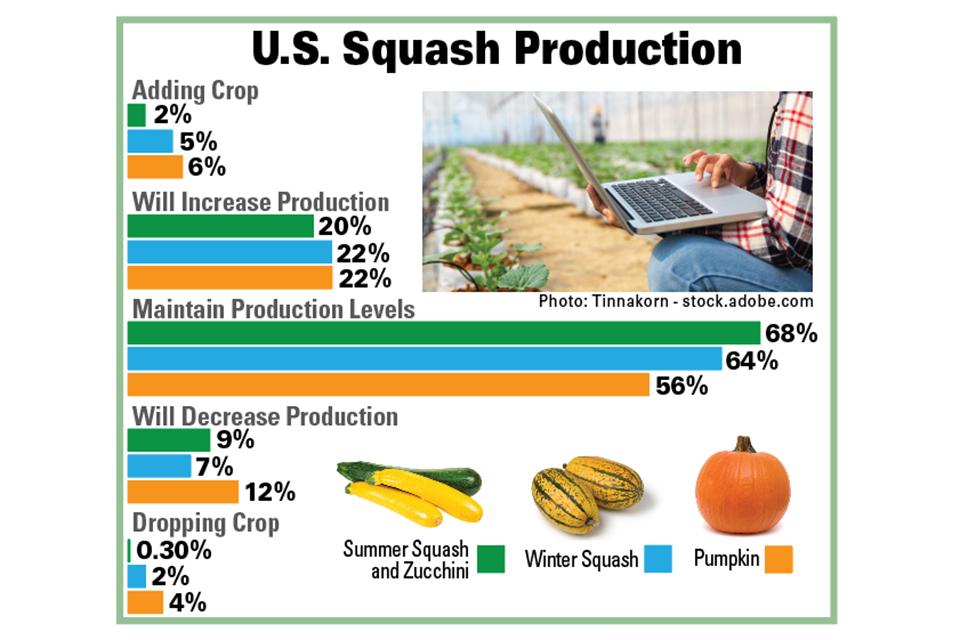
Crop Protection
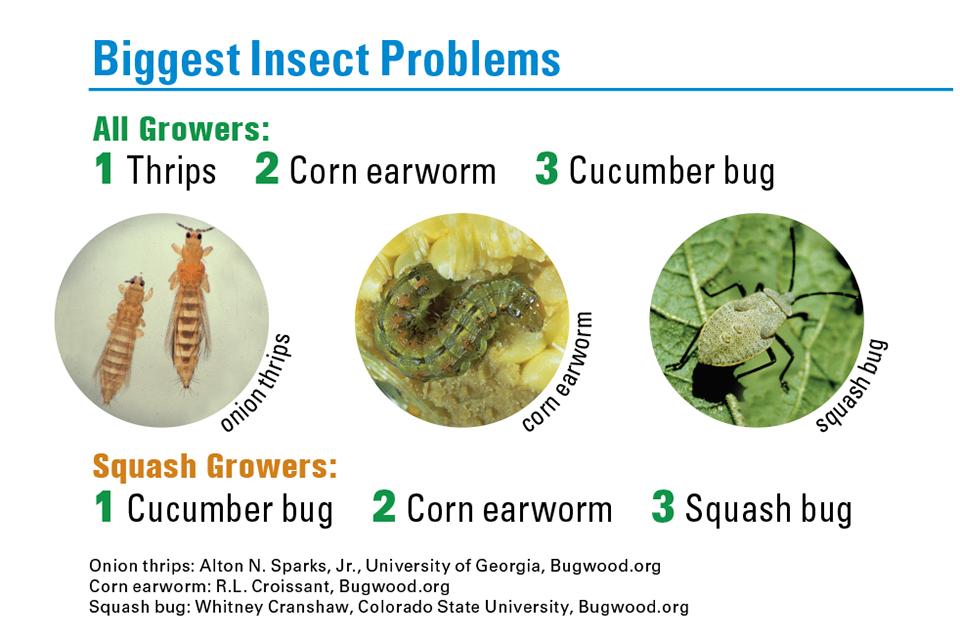
Precision Tech
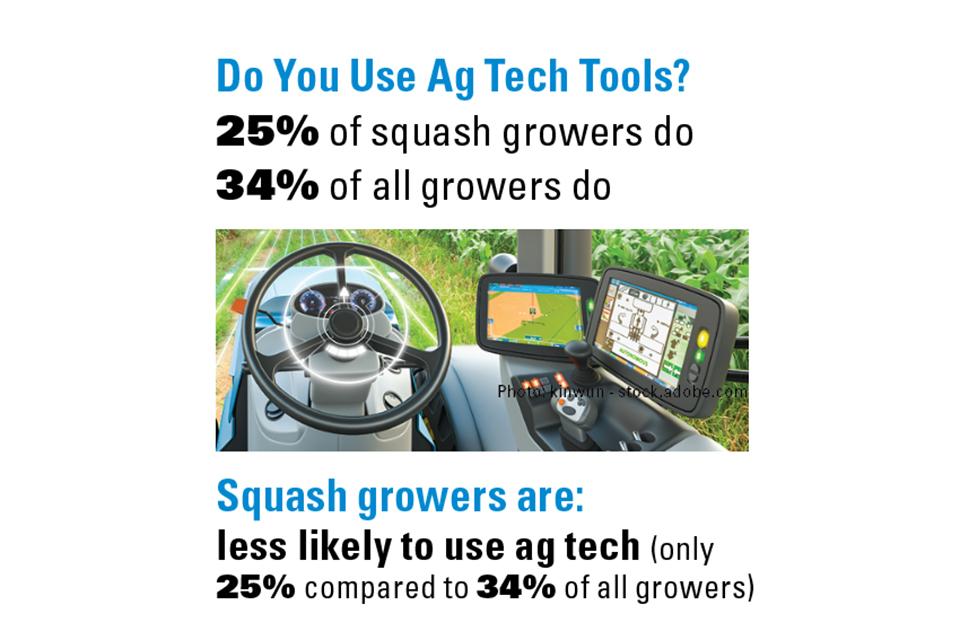
Ag Tech Use

Yet even once you compare only those who are using ag tech, further differences emerge. Both groups embrace GPS (global positioning system) guidance systems (a statistical tie of 63% and 66%). But after that commonality, squash producers who use ag technology adopt the tools at a distinctly lower amount.
While the tools used are similar — only one item differs in the Top 10 for each group — you can find differences in why they use technology.

The first two reasons are the two most obvious ones (increased efficiency and improved crop quality). But after that, the two groups diverge.
While squash growers’ rank decreasing inputs at No.3 , it comes in at No. 6 for all growers. All growers’ No.4 motivation for using ag tech is to improve water conservation. For squash growers, it’s No. 6. And lack of labor? It ranks No.8 for squash growers while it makes the Top 5 for all growers.
Protected Ag
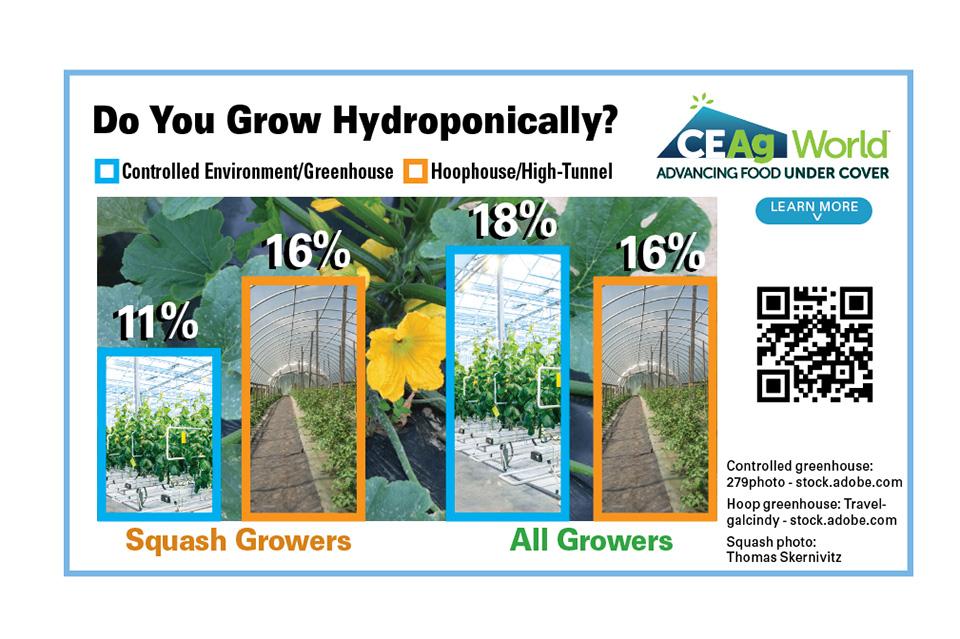
Squash growers are more likely to use hoop houses and greenhouses than growers in general (46% vs. 52%). The difference in use is mostly in hoop houses, with squash producers 9 percentage points ahead of all growers.
In general, squash growers’ indoor ag production practices are aligned with all other growers. For one, the top indoor crops for both are tomatoes, leafy greens, peppers, and cucurbits. About 80% of both groups say the main reason for growing under cover is to extend the season.
The only other area of departure between the two groups? Growing crops hydroponically.






